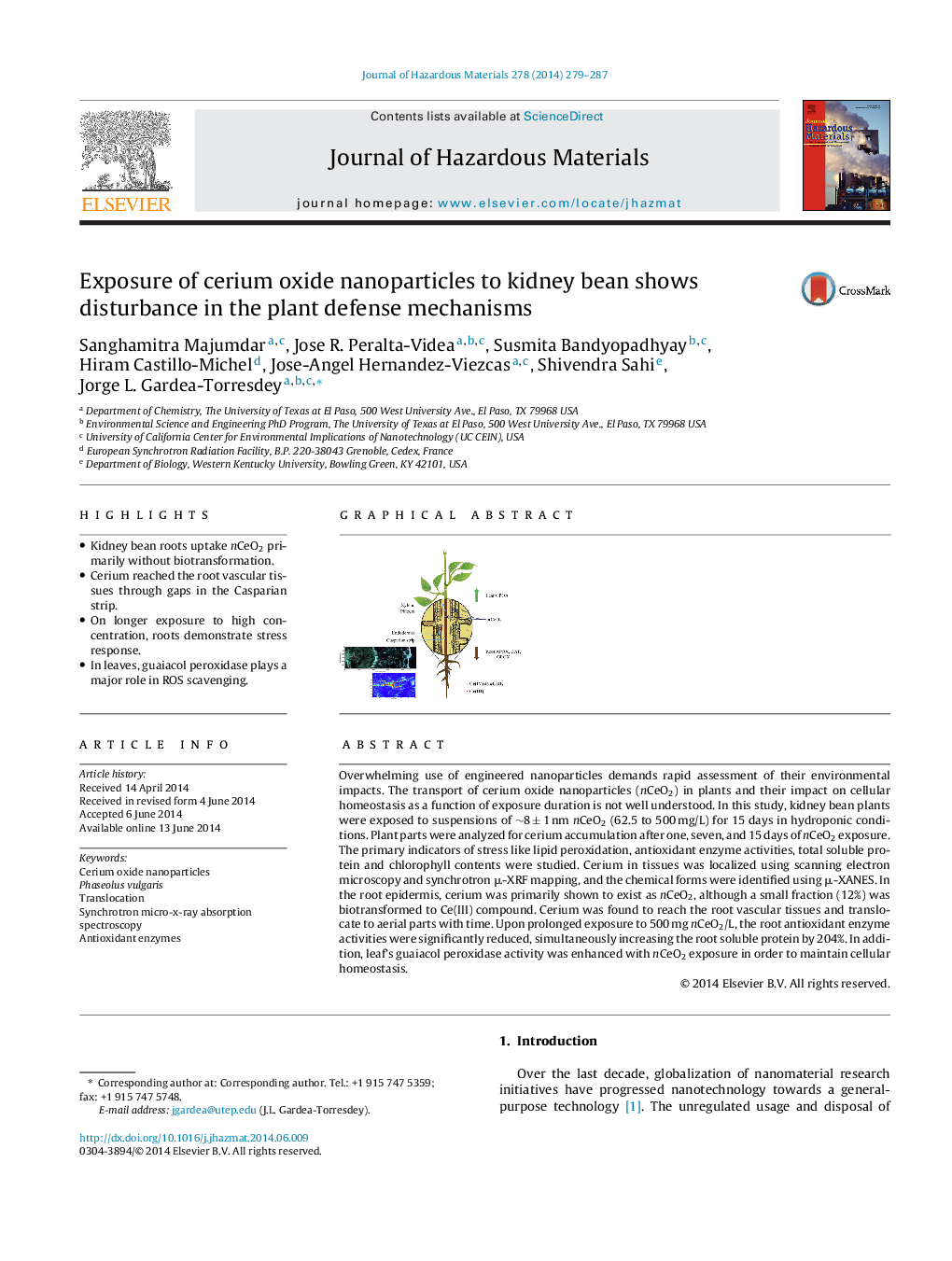| Article ID | Journal | Published Year | Pages | File Type |
|---|---|---|---|---|
| 576535 | Journal of Hazardous Materials | 2014 | 9 Pages |
•Kidney bean roots uptake nCeO2 primarily without biotransformation.•Cerium reached the root vascular tissues through gaps in the Casparian strip.•On longer exposure to high concentration, roots demonstrate stress response.•In leaves, guaiacol peroxidase plays a major role in ROS scavenging.
Overwhelming use of engineered nanoparticles demands rapid assessment of their environmental impacts. The transport of cerium oxide nanoparticles (nCeO2) in plants and their impact on cellular homeostasis as a function of exposure duration is not well understood. In this study, kidney bean plants were exposed to suspensions of ∼8 ± 1 nm nCeO2 (62.5 to 500 mg/L) for 15 days in hydroponic conditions. Plant parts were analyzed for cerium accumulation after one, seven, and 15 days of nCeO2 exposure. The primary indicators of stress like lipid peroxidation, antioxidant enzyme activities, total soluble protein and chlorophyll contents were studied. Cerium in tissues was localized using scanning electron microscopy and synchrotron μ-XRF mapping, and the chemical forms were identified using μ-XANES. In the root epidermis, cerium was primarily shown to exist as nCeO2, although a small fraction (12%) was biotransformed to Ce(III) compound. Cerium was found to reach the root vascular tissues and translocate to aerial parts with time. Upon prolonged exposure to 500 mg nCeO2/L, the root antioxidant enzyme activities were significantly reduced, simultaneously increasing the root soluble protein by 204%. In addition, leaf's guaiacol peroxidase activity was enhanced with nCeO2 exposure in order to maintain cellular homeostasis.
Graphical abstractFigure optionsDownload full-size imageDownload as PowerPoint slide
